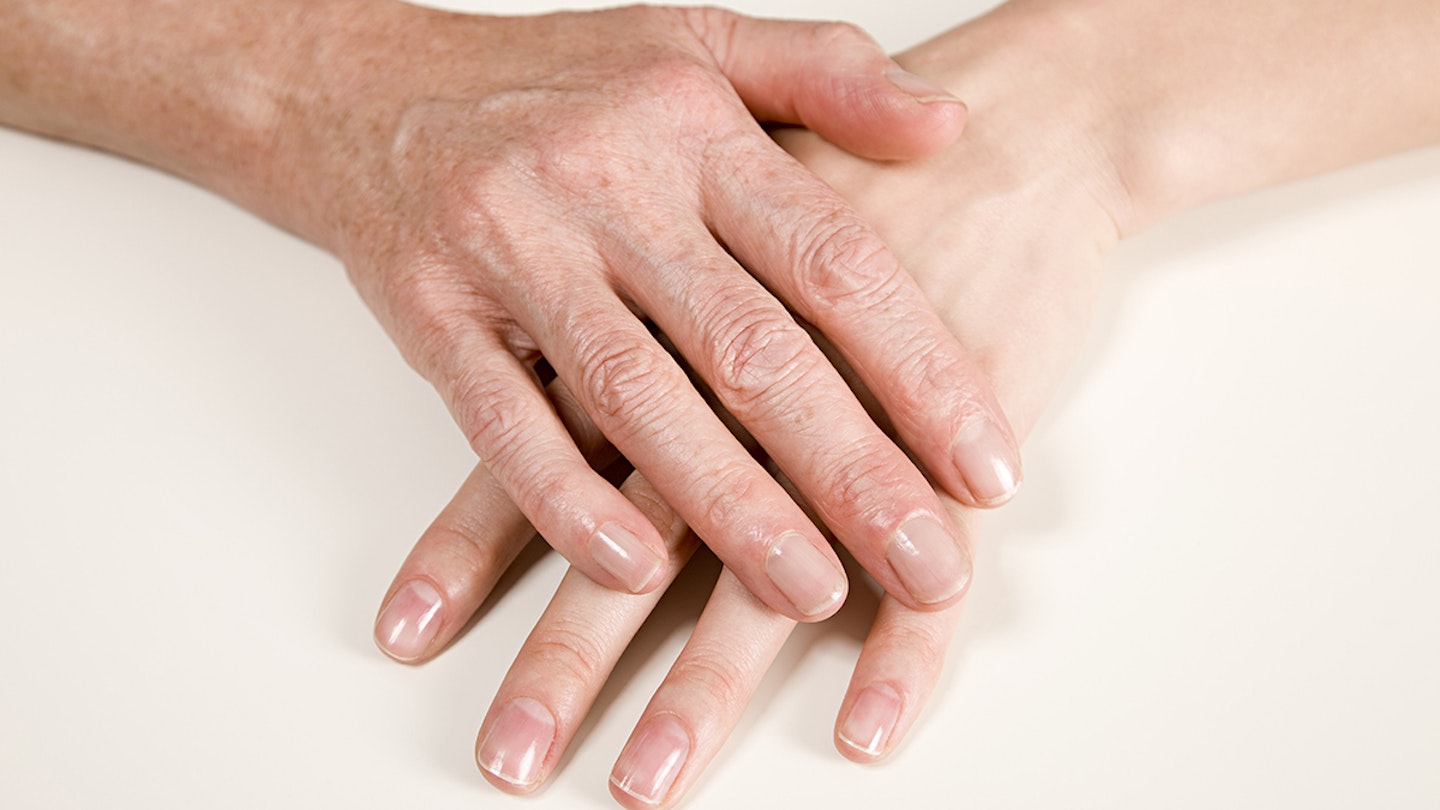Age spots are flat brown marks on the skin, also known as liver spots or hyperpigmentation. If you've noticed them appearing on your body, don't panic - age spots are harmless, painless and commonly appear in people over 40.
To find out all about age spots, we asked Genevieve Knodell, aesthetic practitioner at Stratum Dermatology Clinics for her expert advice on how to look after our skin and if there is a way to get rid of age spots.
Why do we get age spots?
Age spots are caused by excess exposure to UV (ultraviolet) light, which stimulates the melanocytes to hyper pigment the surrounding skin cells.
They can vary in size and usually appear on the face, hands, arms, and shoulders, where the skin receives the most sun exposure.

What's the difference between age spots and moles?
Age spots appear in time, due to natural aging, as a result of long exposure to the harmful UV rays or even because of a fungus, while moles can be present on your skin since birth, or can appear later in life. Moles are more often raised or slightly bumpy, rather than flat like age spots. If you're not sure if you've got a mole or an age spot, speak to your GP or a specialist dermatologist.
What are the best ways to get rid of age spots?
Although age spots are harmless, many people look to have them removed for cosmetic reasons.
A growing group of dermatology facilities based throughout the UK offer chemical peels, which are a good way to start your journey to clearer, more even skin.
It's best to treat the skin from the outside in, so begin with a few peels to start the rejuvenation process.
Working with melanocyte inhibiting ingredients can help to peel away the build-up of pigment while working to regulate and normalise the melanin production in the skin and start improving the appearance of hyperpigmentation and age spots.
Patients could also consider laser and intense pulsed light (IPL) treatments.
These treatments work by delivering a spectrum of light at specific wave lengths to target pigmented skin. The laser will target the pigment without affecting the surrounding tissue and effectively lift the pigment sitting in the epidermal layers to reveal a clearer more even appearance.
We would usually move on to the laser work to get in a bit deeper and target the more stubborn pigmented lesions that are remaining. This is also a good way to target and spot treat a pigmented lesion rather than a large area.
It is important to follow a good skin care routine to protect the skin against further damage and stimulation. Using a high factor sun protection with is critical.
Creams with ingredients such as Vitamin C, retinol, and other stabilising and depigmenting ingredients such as cysteamine can also help work on depigmenting the skin.
Is there anything we should keep in mind when we see age spots and new pigment? When should we contact our GP?
An age spot that was quite light in the early years can turn darker over time. It is good to keep an eye on these pigmented lesions and contact your GP if you start noticing any changes such as texture, raised surface, and if it starts to show more than one colour within the spot or a sudden darkening. It is also important to keep an eye out for oddly shaped borders.
Are age spots linked to serious skin conditions?
Age spots usually don’t require medical care, however it is important to keep an eye on lesions for changes such as rapid darkening, increasing in size, irregular borders, unusual combination of colours or irritation or bleeding, as these changes can be a sign of melanoma (a serious form of skin cancer).

What can we do to keep our skin healthy?
My top tips include:
• Follow a good healthy balanced lifestyle to feed the body and skin from within.
• Wear protective clothing when out in the sun. Consider wearing clothing designed to provide sun protection. For protection from the sun, wear tightly woven clothing that covers your arms and legs and a hat
• Use a broad-spectrum sunscreen that provides protection from both UVA and UVB light and has a high sun protection factor (SPF).
• Opt for skin products containing antioxidant protection (vitamin C) and use correcting products such as a high strength retinol.
